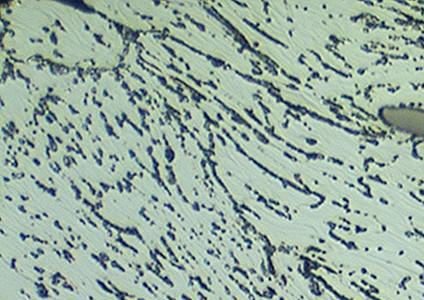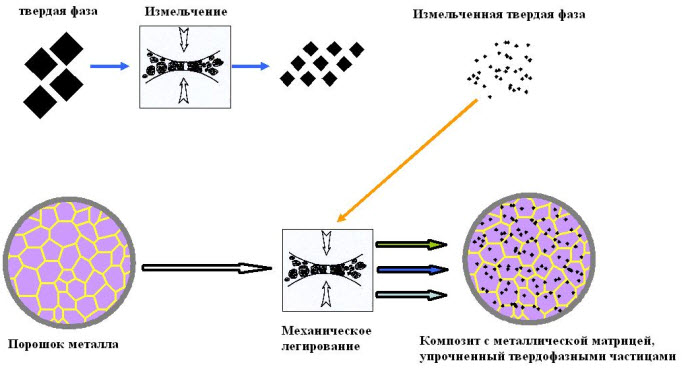Mechanical alloying
Mechanical alloying is used in powder metallurgy for the production of alloys that retain their chemical stability and strength at high temperatures. Dispersion-strengthened alloys are applied in the aircraft industry, space industry, motor industry, as well as in the production of turbines and electro contact materials.
We are convinced that the use of planetary mills for mechanical alloying is promising. Our company will readily develop various technologies for the production of dispersion-strengthened alloys using planetary mills, for example, alloys based on nickel, iron, cobalt, copper, aluminum, titanium, and other metals. The company holds the patent dealing with the method for the applying metal coating on powders. Comparison with analogues.. Composite materials Al/Al2O3 and Al/NiTi were mechanically alloyed in planetary mills. As a result, high degree of coverage of the solid phase by metal, good adhesion, and uniform distribution of the solid phase in the metal matrix were achieved along with the considerable speeding-up of the process. It was documented in the “Activation” project that it takes from 20 to 90 minutes in a planetary mill to obtain crystallite sizes less than 100 nm while the same process takes from 8 to 24 hours in market counterpart mills and attritors. Scaling-up of milling processes. Planetary mills of industrial type of various throughput rates are commercially available. Due to this fact it is possible to proceed from the laboratory-scale investigations to the development of the mechanical alloying technology on industrial scale. Mechanical milling in the high-energy mills is the most productive way to obtain nanocrystalline and amorphous powders of different materials such as metals, alloys, intermetallics, ceramics and composite materials. Particle size reduction and plastic deformation of substances are not the only processes taking place. They are accompanied by the mixing of substances on the atomic level when chemical interaction and mass transfer of solid reagents are activated. As a result of mechanical attrition and mechanical alloying, the high solubility in the solid state can be achieved even for those elements which do not have mutual solubility in the equilibrium conditions. The average crystallite size in the powders obtained is in the range from 200 to 5-10 nm. Ball mills, planetary mills, and vibratory mills are used for milling and mechanochemical synthesis. Mechanical alloying is a unique process for mixing of heterogeneous components in the form of powders. The conception of mechanical alloying was proposed in the 1970s. This process represents the mixing of elements or of the principal constituent alloys (ligatures, master alloys) in the form of powder using special mills with a relatively high content of milling balls. If necessary, particles of a hard phase can be dispersed in metal. The process product is a composite powder consisting of a homogeneous mixture of the components, the internal structure of the obtained composite particles differing only on a subgrain level. Mechanical alloying allows one to obtain compounds of the following types: metal-metal (even for the immiscible combinations), metal (alloy) – oxides, metal (alloy) – nonmetal. The number of contacts between reagents and the contacting area are growing as a result of the mechanical treatment of the mixture. Shear stresses between the particles emerge. They promote the product elimination from the near-contact area and continuous direct interaction of the reagents. Heat release in the near-contact area can lead to the contact melting. In the case of metallic systems, it can intensify the process.
|

Active-nano (Andrey V. Petrov)



